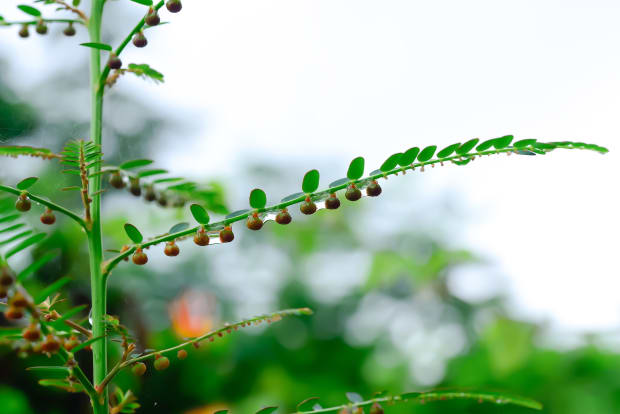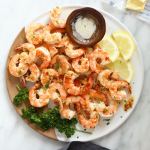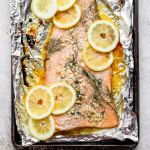- Like
- SHARE
- Digg
- Del
- Tumblr
- VKontakte
- Flattr
- Buffer
- Love This
- Save
- Odnoklassniki
- Meneame
- Blogger
- Amazon
- Yahoo Mail
- Gmail
- AOL
- Newsvine
- HackerNews
- Evernote
- MySpace
- Mail.ru
- Viadeo
- Line
- Comments
- Yummly
- SMS
- Viber
- Telegram
- JOIN
- Skype
- Facebook Messenger
- Kakao
- LiveJournal
- Yammer
- Edgar
- Fintel
- Mix
- Instapaper
- Copy Link
Deep in the rain forests of the Amazon grows a small, shrub-like herb called chanca piedra that has powerful healing benefits. Also known as “stone breaker,” chanca piedra has traditionally been used in Peru and the Amazonian rainforest to treat kidney stones and gallstones (hence its name). Modern studies show it also has powerful benefits in conditions ranging from ulcers to hepatitis B.
Always check with your health care provider before taking herbs or supplements, and then see how this traditional herb can help you:
1. Kidney Stones
Chanca piedra helps decrease urinary oxalate and uric acid levels, reducing the risk of kidney stones. One of the earliest studies of chanca piedra found that people who drank a traditionally brewed tea for 1 to 3 months had a significantly reduced rate of kidney stones. Another study found an extract form, versus tea, effectively blocked the formation of calcium oxalate crystals, the compounds that make up kidney stones. other studies show that various forms of chanca piedra inhibit the growth and number of stones, and encourage the passing of existing stones.
2. Ulcers and Stomach Problems
A number of recent studies show chanca piedra can effectively treat gastric (stomach) infections, including helicobacter pylori (H. pylori) a type of bacteria that’s associated with the formation of ulcers. Most important, chanca piedra doesn’t interfere with Lactobacillus acidophilus and other beneficial bacteria in the gut, unlike antibiotics and other medications typically used to treat H. pylori infection.
3. Liver Protection
Traditional cultures used chanca piedra to protect and heal the liver, and modern studies are focusing on its ability to safely and effectively treat hepatitis B virus (HBV). It’s possible that chanca piedra may also render carriers of the virus sero-negative, meaning they can’t pass it on to others. Other studies suggest it can also effectively treat hepatitis C virus and slow the progression of fatty liver disease.
4. Cardiovascular Health
Chanca piedra contains geraniin, a compound that’s been linked with reduction in high blood pressure. In one older study, people with high blood pressure who took chanca piedra leaf powder showed a significant reduction in blood pressure, along with an increase in sodium excretion. Newer research also points to the cardioprotective effects of chanca piedra, including reduction of LDL cholesterol and triglycerides. ,
5. Blood Sugar Balance
Certain compounds in chanca piedra support balanced blood sugar, and studies show extracts of the herb suppress a rise in blood glucose after a high-sugar meal. In other research, chanca piedra significantly reduced blood sugar levels when people took the herb for 10 days, and studies suggest it may help treat type 2 diabetes. ,
6. Pain Relief
Chanca piedra has been used for thousands of years to relieve pain, reduce muscle spasms and block inflammation. Geraniin, one of the active compounds in chanca piedra, appears to inhibit neurotransmitters that relay pain signals, and studies suggest it’s seven times as potent as aspirin or acetaminophen in relieving pain.
Prone to Kidney Stones? 7 Natural Ways to Ward Them Off
Kidney stones may sound like the punch line of a bad joke, but anyone who’s passed one will tell you they’re no laughing matter. Formed when certain minerals and salts in the urine stick together, these painful little formations can range in size from a grain of sand to a ping pong ball.
If they’re small enough, kidney stones can pass through the urinary tract on their own with no incident, but larger ones can cause enormous pain and serious complications. If you’re prone to stones, following a few simple solutions can help:
1. Drink lots of water. Studies suggest increased water intake reduces the risk of kidney stone formation and recurrences.
2. Avoid foods high in oxalates, compounds that occur naturally in many foods and are the basis for many kidney stones. High-oxalate foods include beets, spinach, rhubarb, strawberries, nuts, chocolate, tea, wheat bran and beans (except lima and green beans).
3. Take magnesium and B6 supplements. The body uses magnesium and vitamin B6 to convert oxalate, preventing its buildup in the urine.
4. Try IP-6. Inositol hexaphosphate, a carbohydrate found in cereal grains, beans, brown rice and other high-fiber foods helps reduce urinary calcium levels, inhibit crystallization of calcium salts, and lower the risk of stones.
5. Drink cranberry juice. Some studies suggest cranberry juice reduces kidney stone risk. Because most cranberry juices are high in sugar, choose unsweetened version, or try cranberry extract in capsules.
6. Get plenty of potassium. Some studies suggest higher potassium intake is linked with reduced risk of kidney stone formation. Find it in foods like potatoes, beet greens, avocados and spinach.
7. Try traditional herbs. Chanca piedra is one of the best-studied herbs to prevent kidney stones. Other options: solidago, commonly called goldenrod, increases blood flow to the kidneys, promotes urination and helps flush out small stones. And senna and aloe contain anthraquinones, compounds that bind calcium and reduce the growth rate of urinary crystals.
References
Barros ME et al. Effects of an aqueous extract from Phyllantus niruri on calcium oxalate crystallization in vitro. Urol Res. 2003 Feb;30(6):374-9.
Freitas AM et al. The effect of Phyllanthus niruri on urinary inhibitors of calcium oxalate crystallization and other factors associated with renal stone formation. BJU Int. 2002 Jun;89(9):829-34.
Pucci ND et al. Effect of Phyllanthus niruri on metabolic parameters of patients with kidney stone: a perspective for disease prevention. Int Braz J Urol. 2018 Jul-Aug; 44(4): 758–764.
Cealan A et al. Evaluation of the efficacy of Phyllanthus niruri standardized extract combined with magnesium and vitamin B6 for the treatment of patients with uncomplicated nephrolithiasis. Med Pharm Rep. 2019 Apr; 92(2): 153–157.
Safavi M et al. Medicinal plants in the treatment of Helicobacter pylori infections. Pharm Biol. 2014 Nov 28:1-22.
Ranilla LG et al. Antimicrobial activity of an Amazon medicinal plant (Chancapiedra) (Phyllanthus niruri L.) against Helicobacter pylori and lactic acid bacteria. Phytother Res. 2012 Jun;26(6):791-9.
Liu S et al. In vitro and in vivo anti-hepatitis B virus activities of the lignan nirtetralin B isolated from Phyllanthus niruri L. J Ethnopharmacol. 2014 Nov 18; 157:62-8.
Wang BE. Treatment of chronic liver diseases with traditional Chinese medicine. J Gastroenterol Hepatol. 2000 May;15 Suppl:E67-70.
Al Zarzour RH et al. Phyllanthus Niruri standardized extract alleviates the progression of non-alcoholic fatty liver disease and decreases atherosclerotic risk in Sprague–Dawley Rats. Nutrients. 2017 Jul; 9(7): 766.
Srividya N et al. Diuretic, hypotensive and hypoglycaemic effect of Phyllanthus amarus. Indian J Exp Biol. 1995 Nov;33(11):861-4.
Khanna AK et al. Lipid lowering activity of Phyllanthus niruri in hyperlipemic rats. J Ethnopharmacol. 2002 Sep;82(1):19-22.
Lee NYS et al. The pharmacological potential of Phyllanthus Niruri. J Pharm Pharmacol. 2016 Aug;68(8):953-69.
Ranilla LG et al. Phenolic compounds, antioxidant activity and in vitro inhibitory potential against key enzymes relevant for hyperglycemia and hypertension of commonly used medicinal plants, herbs and spices in Latin America. Bioresour Technol. 2010 Jun;101(12):4676-89.
Okoli CO et al. Studies on the possible mechanisms of antidiabetic activity of extract of aerial parts of Phyllanthus niruri. Pharm Biol. 2011 Mar;49(3):248-55.
Ishimoto H et al. In vivo anti-inflammatory and antioxidant properties of ellagitannin metabolite urolithin A. Bioorg Med Chem Lett. 2011 Oct 1;21(19):5901-4.
Bao Y et al. Water for preventing urinary stones. Cochrane Database of Systematic Reviews. 2012 Jun 13;(6):CD004292.
McHarg T et al. Influence of cranberry juice on the urinary risk factors for calcium oxalate kidney stone formation. BJU Int. 2003 Nov;92(7):765-8.
Ferraro PM et al. Dietary protein and potassium, diet–dependent net acid load, and risk of incident kidney stones. Clin J Am Soc Nephrol. 2016 Oct 7; 11(10): 1834–1844
Melzig MF. Goldenrod—a classical exponent in the urological phytotherapy. Wien Med Wochenschr. 2004 Nov;154(21-22):523-7.


